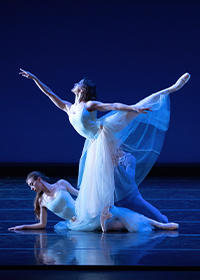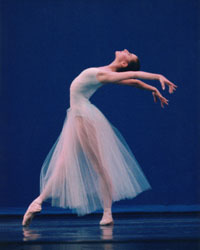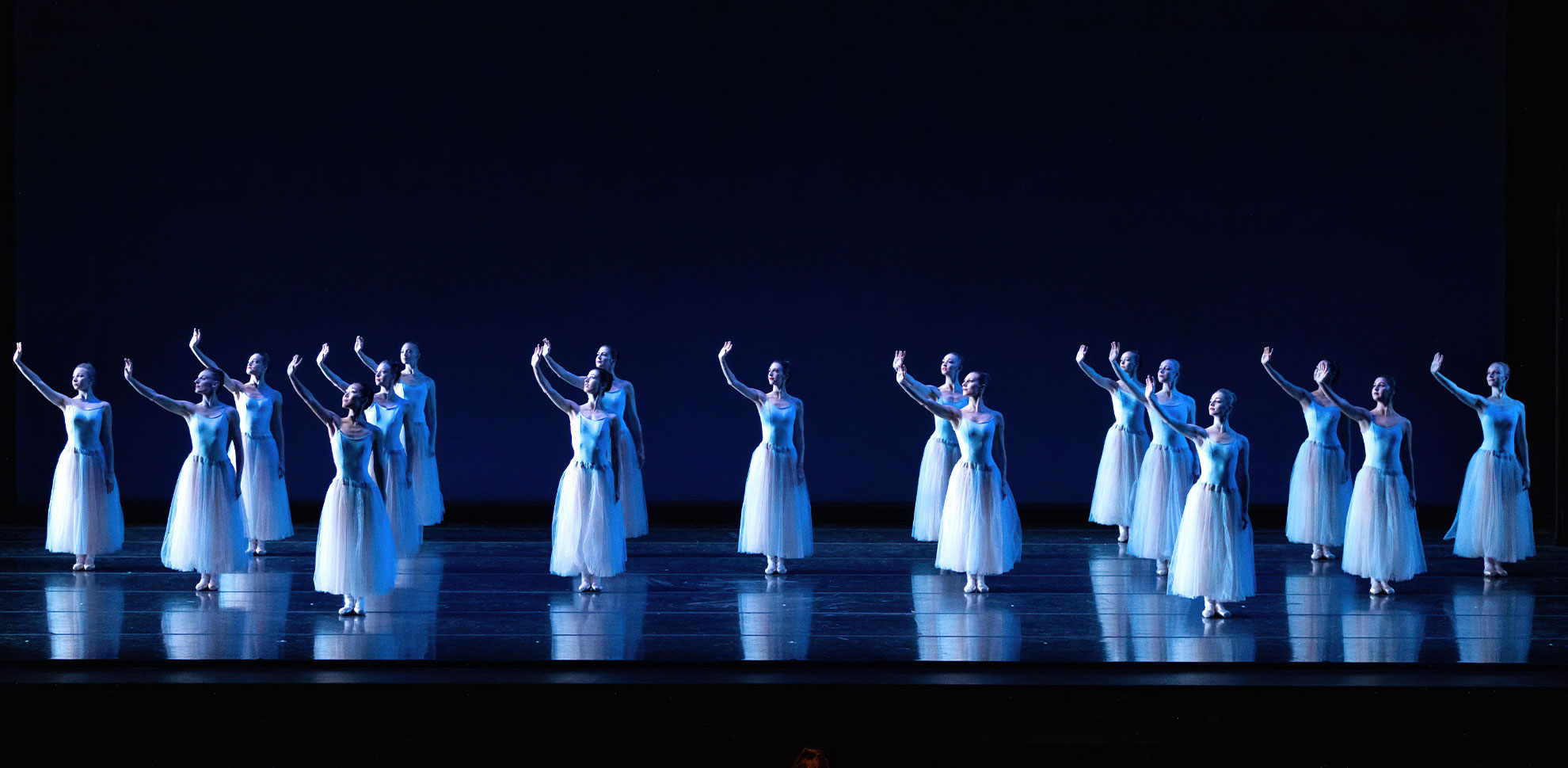
Choreography by George Balanchine
Music by Peter I. Tchaikovsky
Staged by Victoria Simon
Lighting Design by Trad A Burns
Conducted by Ramona Pansegrau
Music performed by The Opus 76 Quartet & Guests
The October 2021 performances of Serenade, are presented by arrangement with the Estate of George Balanchine in accordance with the Balanchine Styles and Balanchine Techniques. Service standards established and provided by the Estate.
Program Notes
Serenade is a milestone in the history of dance. It is the first original ballet Balanchine created in America and is one of the signature works of New York City Ballet’s repertory. The ballet is performed by 26 dancers in blue costumes in front of a blue background. Originating it as a lesson in stage technique, Balanchine worked unexpected rehearsal events into the choreography. When one student fell, he incorporated it. Another day, a student arrived late, and this too became part of the ballet.
After its initial presentation, Serenade was reworked several times. In its present form there are four movements — “Sonatina,” “Waltz,” “Russian Dance,” and “Elegy.” The last two movements reverse the order of Tchaikovsky’s score, ending the ballet on a note of sadness. Balanchine had a special affinity for Tchaikovsky.
“In everything that I did to Tchaikovsky’s music,” he told an interviewer, “I sensed his help. It wasn’t real conversation. But when I was working and saw that something was coming of it, I felt that it was Tchaikovsky who had helped me.”
Repertory notes provided courtesy of and adapted from New York City Ballet Online Repertory Index.

Kansas City Ballet Premiere: May 13, 1982
Choreography: George Balanchine
Music: Peter Tchaikovsky
Staged By: Una Kai
About the ballet
Serenade was the first ballet choreographed by George Balanchine when he arrived in America in 1935. While initially set on students of the young School of American Ballet, it has since become a signature work of New York City Ballet’s repertory and is the most frequently performed of Balanchine’s works throughout the world. The work is set to Tchaikovsky’s Serenade for Strings in C and is a masterwork of geometrical poetry.
Program Notes
The creation of Serenade, Balanchine’s first work for American dancers, has been widely documented. The ballet evolved over a period of weeks in a classroom at the School of American Ballet. Incorporated into the design of the work are those accidents, incidents, and possibilities which are familiar aspects of the class experience: the number of dancers varied from day to day; someone was absent; someone arrived late; someone fell. Events of chance became a part of the piece that would become Serenade. They remain.
From the non-hierarchical classroom setting comes another significant aspect of the work. Abandoning rigid and traditional role assignments (the cavalier, the ballerina, the corps) Balanchine presents an ensemble of equals. The group before us, uniformly costumed, is uniformly capable. The soloists emerge, evolve, appear, are reabsorbed in the whole; according to their talents they are shown to advantage. Serenade suggests a story, or more accurately presents a compelling emotional relationship between the dancers. If it is a story, it is one without beginning, middle or end. Again, it is a matter of possibilities.
World Premiere: March 1, 1935 Adelphi Theatre, New York
Kansas City Ballet Premiere: May 13, 1982, Lyric Theatre, Kansas City, Missouri
